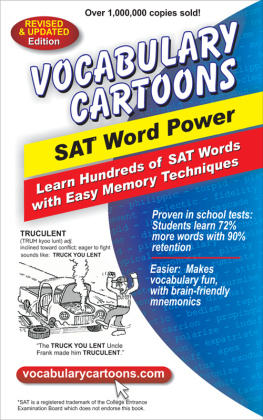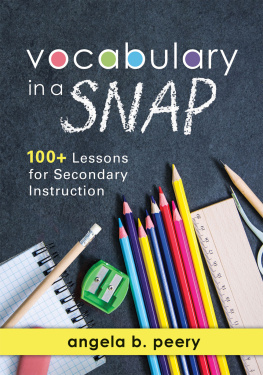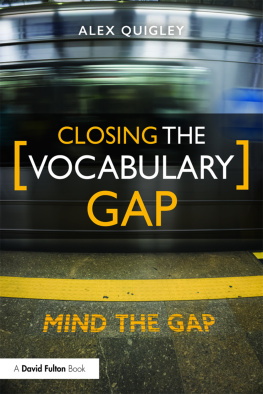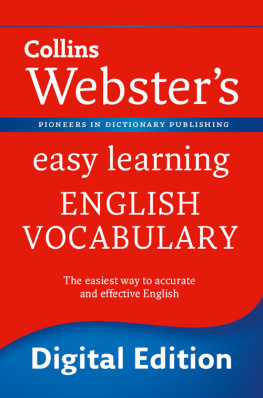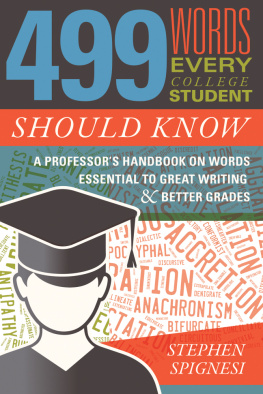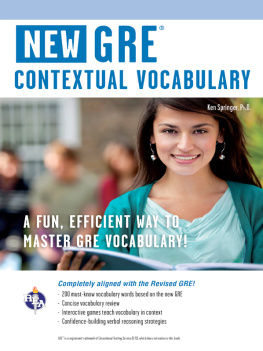Table of Contents
Copyright 2004 by John Wiley & Sons, Inc. All rights reserved.
Published by Jossey-Bass
A Wiley Imprint
989 Market Street, San Francisco, CA 94103-1741 www.josseybass.com
No part of this publication may be reproduced, stored in a retrieval system, or transmitted in any form or by any means, electronic, mechanical, photocopying, recording, scanning, or otherwise, except as permitted under Section 107 or 108 of the 1976 United States Copyright Act, without either the prior written permission of the Publisher, or authorization through payment of the appropriate per-copy fee to the Copyright Clearance Center, Inc., 222 Rosewood Drive, Danvers, MA 01923, 978-750-8400, fax 978-646-8600, or on the web at www.copyright.com . Requests to the Publisher for permission should be addressed to the Permissions Department, John Wiley & Sons, Inc., 111 River Street, Hoboken, NJ 07030, 201-748-6011, fax 201-748-6008, e-mail: permcoordinator@wiley.com.
Permission is given for individual classroom teachers to reproduce the pages and illustrations for classroom use. Reproduction of these materials for an entire school system is strictly forbidden.
Jossey-Bass books and products are available through most bookstores. To contact Jossey-Bass directly call our Customer Care Department within the U.S. at 800-956-7739, outside the U.S. at 317-572-3986 or fax 317-572-4002.
Jossey-Bass also publishes its books in a variety of electronic formats. Some content that appears in print may not be available in electronic books.
ISBN: 0-7879-7101-4
Printed in the United States of America
FIRST EDITION
PB Printing 10 9 8 7 6 5 4 3 2 1
MATH AND SCIENCE LISTS
Most of the lists in this book are suitable for any teacher and perhaps a bit more for English teachers, but a surprising number of the lists are aimed at math and science teachers or those teachers who at least sometimes teach in those areas.
INTRODUCTION
Once I went to a teachers conference and spent some time in a publishers booth that was showing a copy of a book I co-authored, The Reading Teachers Book of Lists. A teacher came up, leafed through the examination copy, and said, This is nothing but some lists of words. Well, she didnt buy the book, but some 300,000 other teachers have, so those lists of words, lists of books, lists of teaching strategies, and lists of a lot of other things must be useful to someone.
I hope this book will be useful too. It is written for teachers of a little older audience: upper elementary school, middle school, secondary school, and college freshmen.
Its focus is vocabulary improvement for reading and writing. It is strong on roots and word origins. It brings in a lot of words used in science, psychology, and literary works. Fortunately, or unfortunately, many of these words appear on standardized tests.
A whole chapter on vocabulary teaching methods is included, but the strong point of the book is to give you vocabulary curriculum content so that you can choose the content for your lessons. You decide what is too hard or too easy for your students. You decide how long or short your class lessons should be. Some lists might be great for just one or two bright students to study; other lists might help students with a foreign language background learn more English. Students who want to cram for college entrance exams will find some helpful lists.
Good writers tend to have good vocabularies. These lists can help student writers vocabularies grow. An important part of writing is spelling. There is a whole chapter on spelling (Chapter 7), but spelling can be improved by a lot of other lists, such as homophones (did he mean site or citesee Chapter 11).
But this book will only succeed if it is interesting. To that end, we have started out with what might be a new word for youCapitonyms, in List 1, Chapter 1. Leaf around in that chapter and later chapters. As one friend put it, If you dont find something interesting, you are brain dead. Well, that is going a bit too far, but a lot of teachers are interested in learning vocabulary for their students and for themselves. I can assure you that I have learned a lot of new words putting this book together and I found it interesting. I hope you will find it interesting too.
February, 2004
Edward B. Fry, Ph.D.
245 Grandview St.
Laguna Beach, CA 92651
ACKNOWLEDGMENTS
First, I would like to thank my diligent editorial assistant, Pat Warren, for helping to keep the manuscript on track, typing, proofreading, and massaging lists. The large homophone chapter was improved by the work of editorial assistant Reta Holmback and my granddaughter (future editor) Jamie Rau.
The contents of this book also were made possible by the earlier scholarship of the sixtyfive or more different works of other authors and editors listed in the references, most of which are in my personal library. In particular I found help and inspiration from the works of the late Edgar Dale, professor of education at Ohio State University, and Norman Lewis, longtime author of popular books on vocabulary building.
I would also like to acknowledge the help and motivation of the Jossey-Bass editor, Steve Thompson, who threw me a curve by changing the title and focus of this book from the more narrow homophones to the broader focus of vocabulary. We both hope the readers approve.
E.F.
To my wife, Cathy
ABOUT THE AUTHOR
Edward B. Fry was a professor of education and director of the Reading Center at Rutgers University in New Brunswick, New Jersey, for twenty-six years. Before that, he taught at Loyola University in Los Angeles and in California public schools sixth grade (in La Habra), special education (in Culver City), and high school reading improvement (in Ventura). He is known to a wider audience of reading educators because of his readability formula, the Instant Words high frequency vocabulary, dozens of journal articles, and a dozen or so reading textbooks and curriculum materials.
Dr. Fry is a past president of the National Reading Conference and a member of the International Reading Association (IRA) since its inception. He was elected to the Reading Hall of Fame in 1993 and has had two Fulbright lectureships to Africa.
He received his Ph.D. from the University of Southern California and a B.A. from Occidental College. Dr. Fry currently writes curriculum materials in reading and writing, skis, snorkels, and speaks on occasion.
In the beginning was the Word ...
John 1:1
Chapter 1
INTERESTING LISTS
List 1 Capitonyms
Some words take on a different meaning when they are capitalized (forming a proper noun). These words are called capitonyms (cap = head, nym = name). Here are a couple of examples.
Caco and Chiro
You might know that cacophony is a harsh sound sometimes produced when the teacher is not in the room (caco = bad, phon = sound) or when an orchestra is tuning up. But bad handwriting from your students or your doctor is cacography and bad speech either defective or vulgar is cacology. Incidentally, the high-class word for handwriting is chirography (chiro = hand).


